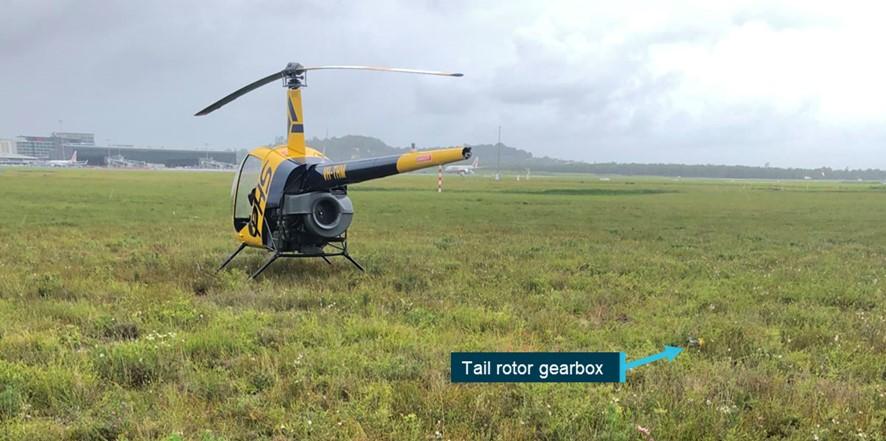
The empennage and tail rotor gearbox of a Robinson R22 helicopter separated during a low hover after a tail rotor blade tip cap detached due to a moisture-induced adhesive bond failure, an ATSB final report notes.
The serious incident occurred on the morning of 26 February 2022 when a student pilot and instructor were conducting a low-level training exercise over Gold Coast Airport’s western grassed training area.
After around 30 seconds of stable hover, with the skids approximately 3–5 feet from the ground, there was a ‘bang’ through the airframe. The helicopter pitched nose up, developed a large vibration and then yawed to the right.
“The instructor immediately took control of the helicopter, lowered the collective and closed the throttle to control the yaw,” Director Transport Safety Dr Stuart Godley said.
The helicopter was landed safely and inspection found that both the tail rotor gearbox and empennage assembly had separated from the tailboom and were located within 10 metres of where the helicopter landed.
“The ATSB’s investigation found that the tail rotor tip cap detached due to a failure of the adhesive bond induced by moisture, with the resulting tail rotor imbalance leading to the fracture of the tailcone aft casting,” Dr Godley said.
Tap testing of the tail rotor blades during the most recent scheduled inspection, for the purpose of detecting adhesive failure, did not identify disbonds that were very likely present at the time.
Later in 2022 Robinson released updated service bulletins and service letters in response to seeing tail rotor blades that were allowed to corrode to an unserviceable condition, and after reports of tail rotor blade tips coming loose in service due to corrosion.
Notably, in June 2022 the manufacturer released a revised service letter for the R22, R44 and R66 helicopters requiring blades be replaced should there be any evidence of bond line corrosion.
“This service letter also included updated visual inspection and acceptance criteria which supplement the existing tap testing and increase the likelihood that degraded blades will be identified and removed from service,” Dr Godley noted.
Robinson has also identified certain part and serial number blades are susceptible to corrosion.
“These blades require additional visual inspection prior to the first flight of the day, until they are replaced with blades that are less susceptible to corrosion.”
The service bulletin details that newer blades have tip caps manufactured from an alternate alloy that reduces the likelihood of corrosion.
In addition, in April 2024 the US Federal Aviation Administration released an airworthiness directive requiring visually checking and inspecting certain part-numbered and serial-numbered R22, R44 and R66 tail rotor blade tip caps for corrosion.


